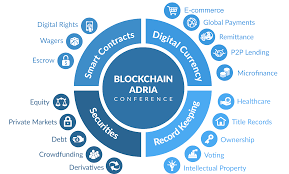Is blockchain poised to be “the next big thing” in education?
This has become a question I hear with increasing frequency about a technology that, up until quite recently, was primarily associated with the cryptocurrency Bitcoin. The subtext to the question, I suppose: do educators need to pay attention to the blockchain? What, if anything, should they know about it?

Admittedly, I haven’t bothered to learn much about blockchain or Bitcoin either, despite the last few years of zealous headlines in various tech publications. I haven’t included either in any of the “Top Ed-Tech Trends” series I’ve written. And frankly, I’m still not convinced there’s a “there” there. But with the news this year that Sony plans to launch a testing platform powered by blockchain, with some current and former Mozilla employees exploring the blockchain and badges, and with a big promotional splash at SXSWedu about blockchain’s potential to help us rethinking learning (as “earning” no less), I realized it was time to do some research (for myself) in the hopes of writing a clear explanation (for others too) of what blockchain is – one that isn’t too technical but that doesn’t simply wave away important questions by resorting to buzzwords and jargon – that blockchain is “the most important IT invention of our age,” for example.
This is the early result of that research. It’s meant to serve as an introductory guide for those in education who are interested in learning a bit more about the blockchain and its potential applications in ed-tech.






0 comments:
Post a Comment